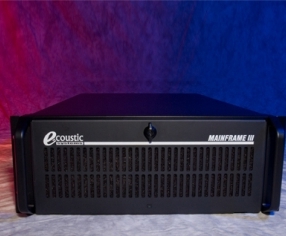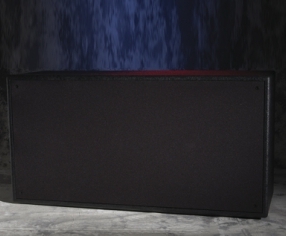Larger than a hanger for a commercial airliner, the Park Avenue Armory occupies an entire city block in midtown Manhattan. Its massive internal volume generates reverberation time in excess of three seconds. However, it functions as a true multi-purpose venue; with programming that includes dramatic performances produced by the Manchester International Festival, and musical performances sponsored by Lincoln Center. We will discuss the unique nature of the venue as well as the tools and techniques employed in staging different productions.
INTRODUCTION
The Seventh Regiment Armory, also known as the ParkAvenue Armory is located at 643 Park Ave, New York,NY. The building occupies one city block between 66th and 67th streets, and from Park Avenue to Lexington Ave. It originally served as the headquarters and administrative building for the 7th New York Militia Regiment, known as the Silk Stocking Regiment due to the disproportionate number of its members who were part of the city's social elite.
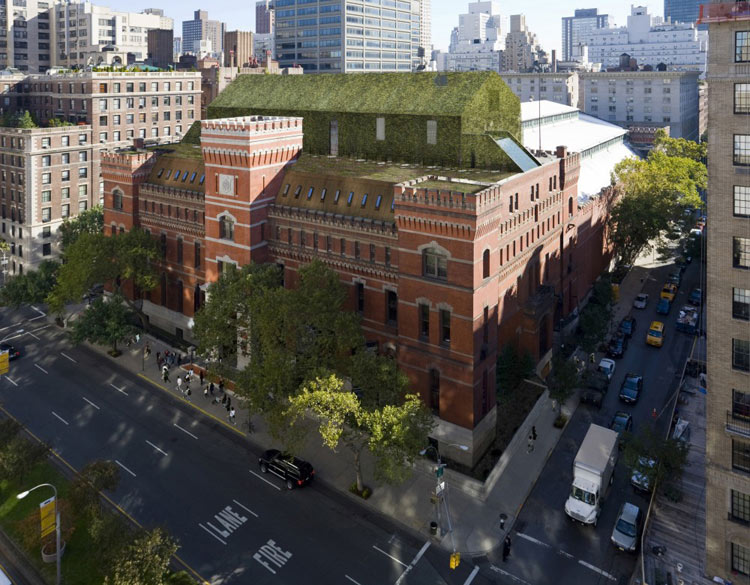
Figure 1: The Thomas Nast painting "The Departure of
the Seventh Regiment to the War" The building was designed and decorated by the leading, or then up and coming architects and designers of the day including Stanford White, Louis Comfort Tiffany, and the Herter brothers. It houses the largest collection of Tiffany interiors under one roof, and is listed as a National Historic Landmark.
1 DRILL HALL
The focus of this paper, however, is the Wade Thompson Drill Hall, which at over 55,000 sq. ft. is one of the largest unobstructed volumes in New York City.
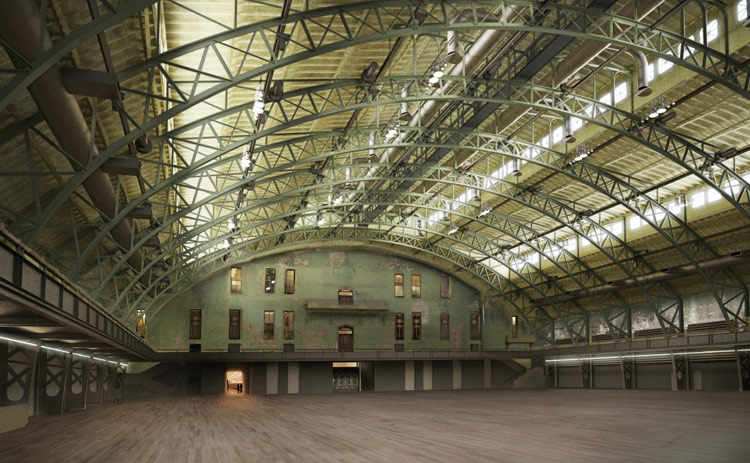
Figure 2: Wade Thompson Drill Hall
The Drill hall has the oldest “balloon shed” ceiling – a barrel vaulted roof on open trusses – in America. The floor is large enough to park a Boeing 767 with room to spare, and its massive 300,000 cubic foot internal volume produces over 3 seconds of reverberation.
Over time the Drill Hall has hosted a wide range of unique events that include: the inaugural May Music Festival in 1881 with an orchestra of 500 and a chorus of 1,200 conducted by Leopold Damrosch; a full Wagner program conducted by Theodore Thomas; a slew of fantastically themed balls (the Martian Ball, the Bovine Ball, the Commonwealth Society Ball attended
by a young Queen Elizabeth II); the lying-in-state of Louis Armstrong; Merce Cunningham’s “Events”;
Luciano Pavarotti in a re-creation of Ancient Rome inside the hall designed by Valentino 1.1 Multi-purpose performing arts on a grand scale Park Avenue Armory is an arts institution dedicated to works that benefit from the freedom of the building’s
vast drill hall and its constellation of magnificent period rooms. The Armory catalyzes productions best realized in a non-traditional setting, partnering with the City’s leading cultural institutions on unconventional projects that introduce New orkers to the Armory as an alternative art space of scale.
2 ACOUSTICAL CONSIDERATIONS
The unique and prominent nature of the programming,artists, collaborators, and sponsors called for an equally unique approach to optimizing acoustical conditions for programming that occurs throughout the space. While the renovation of the “head house” and function rooms allowed for the use of “typical” materials and treatments, the Drill Hall presented challenges that were (and remain) anything but typical. Current management had inherited a building that suffered from a halfcentury of poor maintenance and intrusive alterations.
There was (and is) great sensitivity preserving the historic patina that makes the Armory unique, while providing updates necessary for public safety and convenience. Thus, altering surfaces or adding “fixed” acoustical treatments to reduce reverberation that might be considered excessive for certain productions is out of the question.
2.1 New programming
In 2013 the, Park Avenue Armory partnered with Lincoln Center to produce programming that would take advantage of the unique nature of the drill hall. The culmination of these events would be a performance of St. Matthew’s Passion by the Berlin Philharmonic Orchestra with seating that closely replicated the vineyard style architecture of the Berlin Philharmonie
concert hall. (Fig.3). Akustiks were hired in partnership with both the Park Avenue Armory and Lincoln Center to oversee with acoustics and sound design. It was determined that meeting the sonic expectations for the performance of St. Matthews Passion would require large amounts of temporary acoustical treatments in combination with an extensive electro-acoustic
enhancement system.
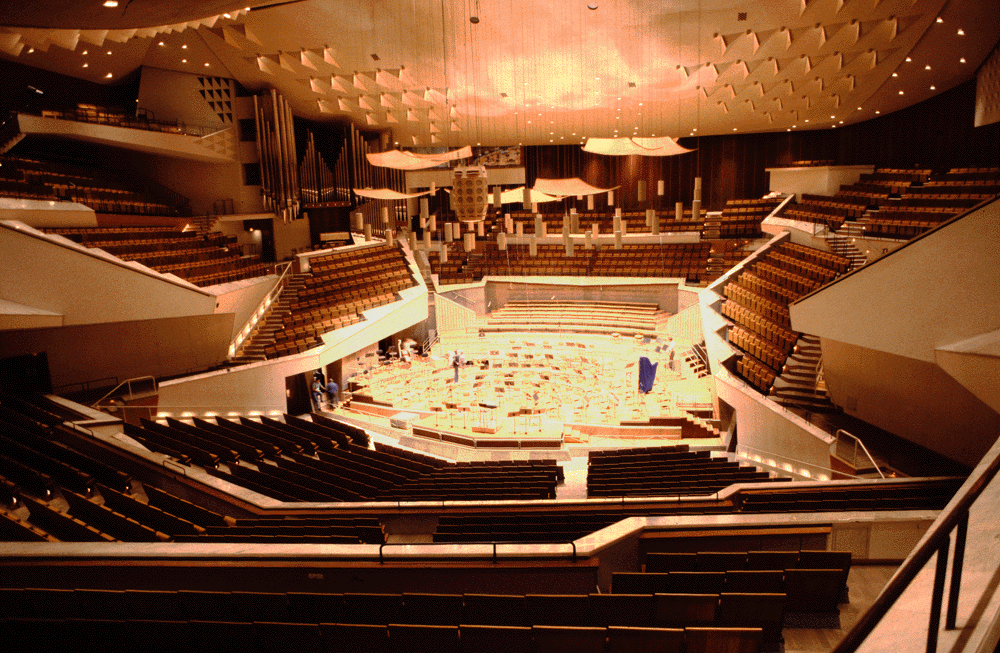
Figure 3: Berlin Philharmonie Concert Hall
The cost of these treatments for use in just one production would be extremely prohibitive. Even with months of advanced planning, rental costs would also be exorbitant. However, it was determined that purchasing the core equipment and treatments, and using them during performances that preceded the concert, would enable the Armory to collect funds that would otherwise be used to rent like/type equipment. This revenue would be used to pay for the system and acoustical treatments.
Akustiks could now focus on providing the core equipment necessary to support a wider variety of programming. For each production, core equipment would be merged with rental equipment that was readily available at typical rental facilities in New York.
3 INFRASTRUCTURE
In a typical multi-purpose performing arts venue, there is a stage or performance area and an area with seating for an audience. This allows for providing and locating essential infrastructure such as machine rooms, electrical service, etc. In contrast, the Armory Drill Hall was designed to accommodate cavalry muster. There is no “fixed” infrastructure. Thus, every production represents a fresh design of infrastructure that includes identifying the temporary “machine room” location(s),
dropping power to those locations, and providing necessary cooling. There are no permanent cable pathways and the Armory owns no cable. Any overhead position that is required for any purpose (audio, lighting, projection, etc) requires construction of truss that is suspended by chain motors that are mounted temporarily to the ceiling beams by riggers using lifts.
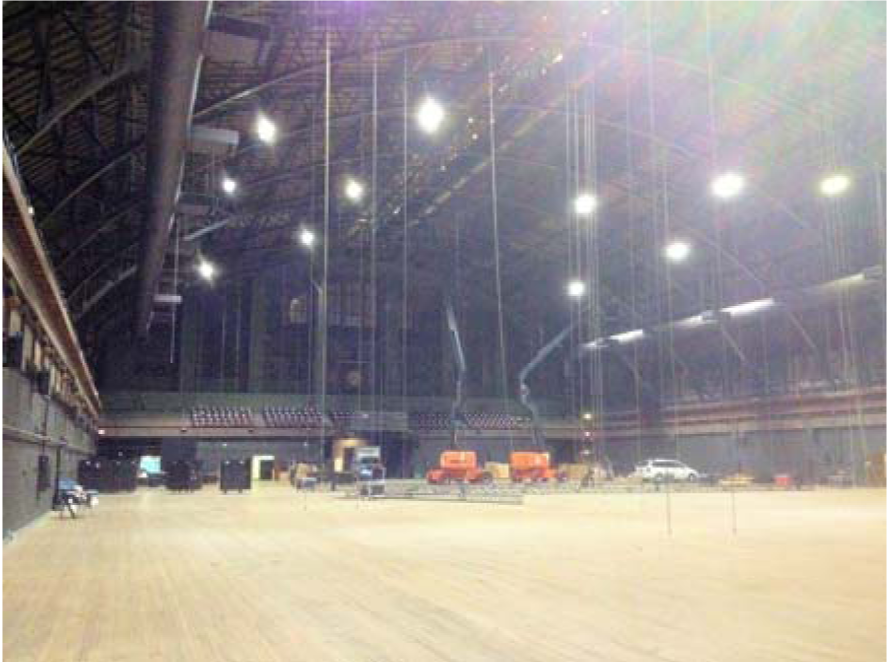
(Fig.4) Rented cable is then terminated and run as required.
The “typical” means of mounting equipment in fixed equipment racks located in a central machine room would not work in the Armory. The system design needed to accommodate an “anything from anywhere” approach.
Figure 4 Typical preparation for an event This would enable the core equipment to be either centrally located, or distributed to different locations as required. The means of interfacing the core equipment to rental equipment needed to utilize the simplest and most common interconnection methods. However, the core equipment also needed to accommodate interfacing with a typical touring system – in particular, it needed to accommodate standard multi-channel digital audio
interconnection from medium and large format mixing consoles 3.1 Acoustical treatment The nature of the Drill Hall would not permit the addition of fixed acoustical treatments sufficient to reduce LF and mid-band reverberation time.
Experiments with small amounts of temporary treatments indicated that the long dimension of the venue generated the most egregious reflections and reverberation. Using large spans of heavy drape suspended from truss at near ceiling height dropping to the floor and traversing the width of the Drill Hall at the boundary of seating areas substantially reduces sound
energy that would otherwise interact with the hard surfaces. In addition, drape is also used at the opposite end in a similar manner, and smaller sections are employed as demanded by the design of a specific production. Such treatment reduces the level of the reverberation sufficiently to enable both sound reinforcement systems and the enhancement system to
work optimally.
3.2 Sound reinforcement loudspeakers
The essential elements in optimizing soundreinforcement in the Armory are 1) minimizing very low frequency output
2) utilizing devices that provide low frequency pattern control, and 3) minimizing sound energy that is not focused at listeners. These concepts are not “new”. However, low frequency pattern control requires enclosures with sufficient size to control the zowest frequencies of interest. Achieving pattern control below 250 Hz is a daunting exercise that would yield enclosures sizes which would be impractical to move, mount, and aim efficiently. We determined that if 250Hz was used as the cut-off for LF pattern control and shelving filters were used below this frequency to control magnitude, we could achieve the desired audio quality for the programming without influence from excessive reverberation. Another consideration,
however, was the use of these devices for acoustic enhancement. They would need to be free from the coloration that is exhibited by many pattern controlled devices which unmasks them as a distinct and localizable sound source. Experiments with several candidates led to the selection of the E-coustic Systems LCF-799 as the optimum choice (Fig.5). A total of 16
units would enable us to meet the requirements for the performance of St. Matthews Passion, as well as provide ample reinforcement for the preceding programs.
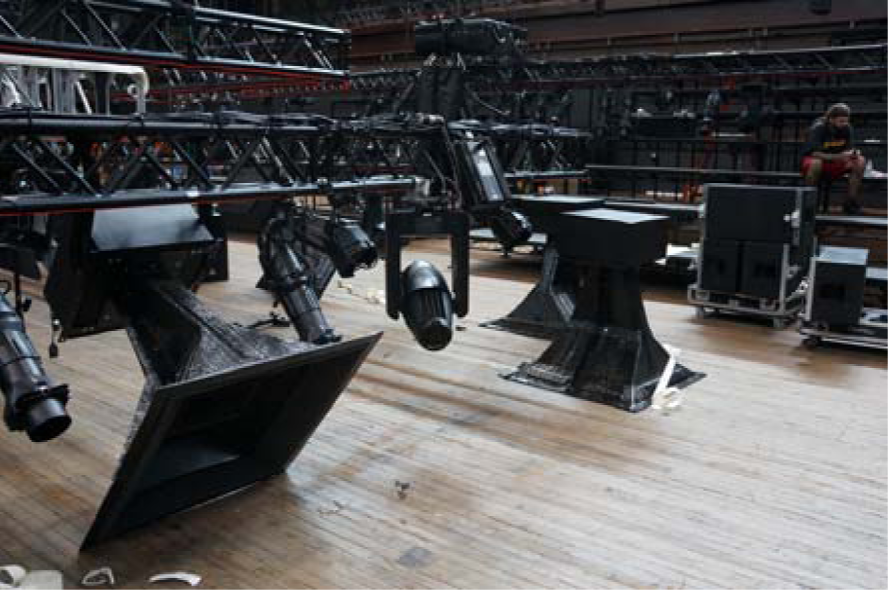
Figure 5 E-coustic Systems LCF-799 Loudspeaker
3.4 Acoustic enhancement loudspeakers
The primary loudspeaker used for acoustic enhancement would need to provide full range broadband power uniformity over a wide coverage pattern (120deg). It would also need to generate sufficient sound output to operate on truss raised near the ceiling of the Armory and provide required magnitude on the floor of the Armory. Weight was also a concern, as the required
loudspeaker density would need to be in line with truss capacity.
3.5 Core processing
The signal processing system would need to interface with multi-channel audio signals from both typical large format digital consoles, as well as multi-channel feeds from disc based recording systems and show control systems. Both digital audio signals as well as analog audio signals would need to be accommodated.
Additionally, multi-channel signals from acoustic enhancement microphones and acoustics processing would need to be either processed independently, or merged with other signals (direct sound, sound effects, surround sound, etc. as required throughout the venue.
The “art installation” programming in the Armory would also require a system that could ingest prerecorded multi-channel audio files and play them through processing to multiple output channels.
System scalability was another important consideration:i.e. - the ability to readily adjust the numbers and types of physical inputs, outputs and signal paths through the system, and the ease with which it could be accomplished.
In order to accommodate these requirements on the scale of the Drill Hall, the system processing would incorporate a point-to-point-to-point matrix with a capacity of 512 channels, utilizing 390 inputs and outputs as required by any production.
64 SR digital inputs MADI
64 SR digital inputs AES EBU
64 SR analog inputs
64 Enhancement microphone Inputs
64 Processed enhancement signals
64 Microphone signals
These input signals would be processed, combined as required, and assigned to specific outputs as needed for any production. The system would provide 390 output channels via MADI, with conversion to AES-EBU
digital audio or analog signals as required.
3.6 Installation
The need to locate the equipment in different areas of the Drill Hall according to the needs of a given production negated the use of equipment cabinets used in typical permanent installations. The equipment would need to be housed in shock mounted enclosures that could easily be assembled in one room, or distributed as required throughout the venue. Wiring
terminations that would be typically made within a single “permanent” enclosure would require custom termination panels to enable interconnection with rental equipment. As an example, analog audio output panels incorporate both individual XLR connectors for each channel as well as a multi-pair connector that mates with a snake terminating to a fan out. This would
provide hired personnel, unfamiliar with all of the equipment, the means to interconnect the system efficiently. The photo in figure 6 shows the configuration of client owned and rented equipment used for one of the productions leading up to St.
Matthews Passion.
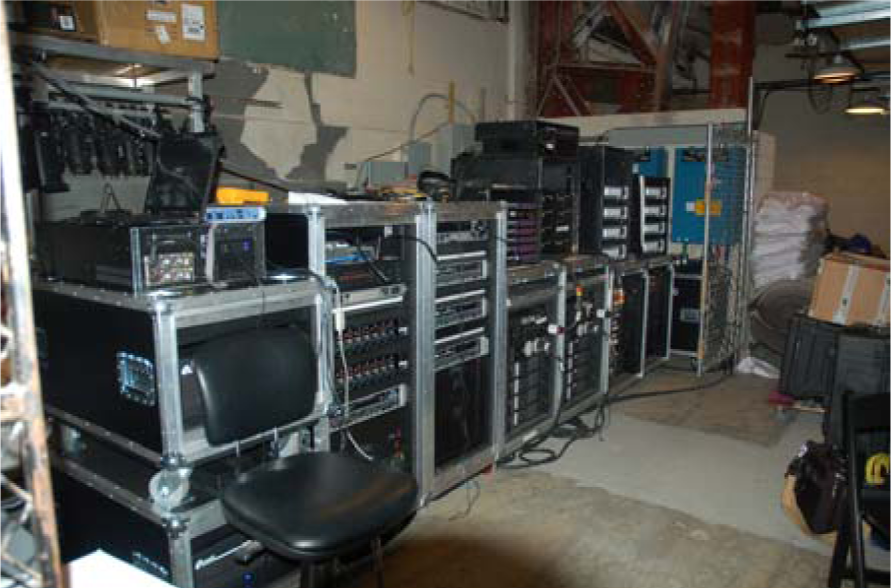
Figure 6 Typical temporary machine room
4 PRODUCTIONS
As is more the norm than not, the decision to order the core equipment, including loudspeakers, was made with just enough advanced notice to make it available for a dramatic production from Manchester UK. This means that all of it would arrive during load in of a foreign production, with none of the staff having seen the equipment, much less having any experience handling, mounting, or rigging it.
4.1 The Machine
The Machine is a dramatic play, the subject of which involves the famous chess match between IBM’s “Deep Blue” and chess champion Gary Kasparov. The play is acted “in the round” with seating arranged to resemble a boxing arena. (Fig 7)
Figure 7 The Machine In addition to body pack wireless microphones, line array microphones were suspended at each corner of the seating “arena”. These microphones fed in pairs to independent E-coustic Systems “acoustics machines” in
the Mainframe III processor. Thus when an actor faced a pair of microphones, signals were sent to the seating area behind them and to each side, maintaining loudspeakers were mounted above the “scoreboard” video displays and maintained directivity and impact (Fig 8), while ECS LCF-599 loudspeakers mounted overhead in each seating zone provided distributed sound reinforcement, sound effects, and surround sound. Black drape was suspended at the edge of each
seating section to minimize sound interaction with distant surfaces. No live musical sources were used – all music and effects were sound files played through specific portions of the system, which also served to minimize sound leakage.
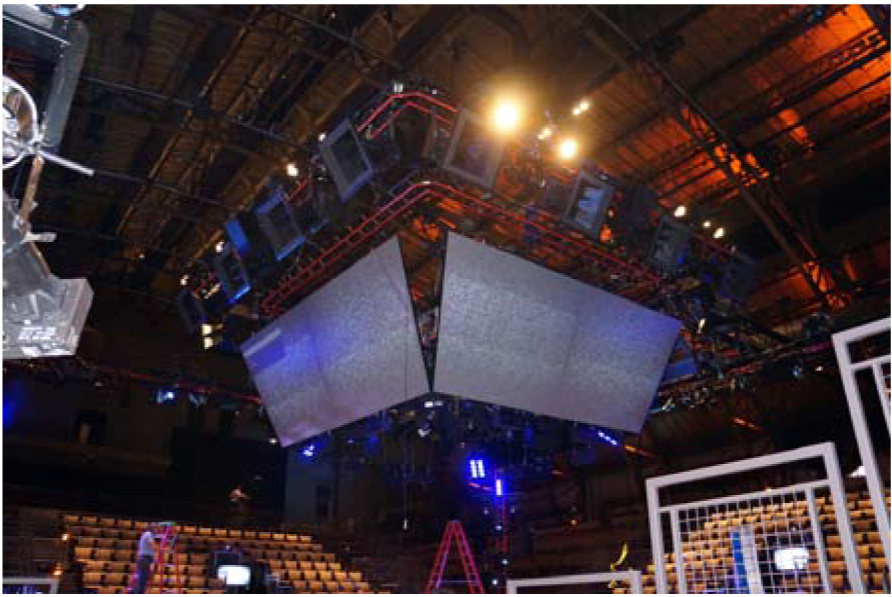
Figure 8 The Machine ECS-LCF-799 Loudspeakers
4.2 Passenger
The next production, the Passenger, was an opera. The subject involved a couple on a cruise ship. The woman was an officer at a Nazi concentration camp, who thinks that she sees another passenger who she had a hand in killing at the camp. The set was very complex, involving rail road tracks with moving cars that were the set for the camp, and the superstructure of a cruise ship built above it for shipboard scenes, with the orchestra situated stage left.
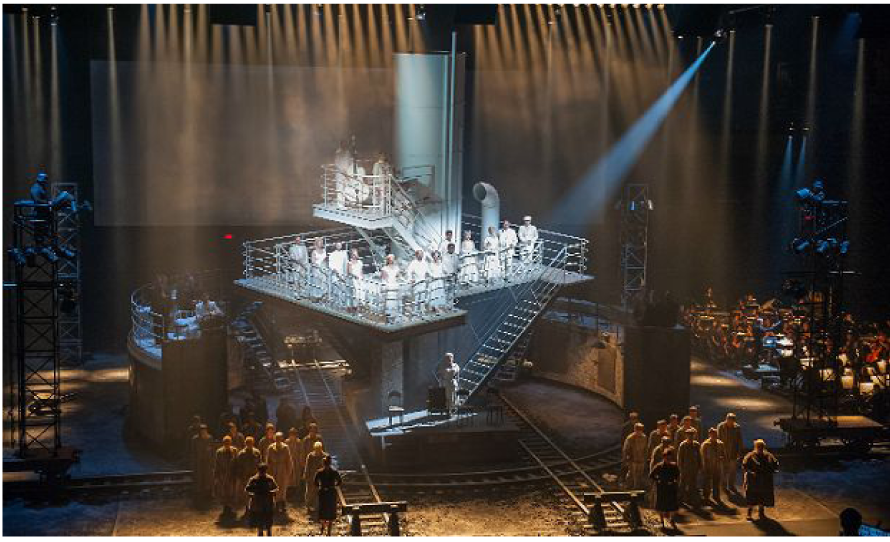
Figure 9 The Passenger Stage
Line array microphones were used to capture singers who were downstage front, and the chorus in the train cars and on the ship deck. Dedicated acoustics engines provided optimum delivery to both the orchestra, as well as the audience. Likewise, microphones positioned above the orchestra fed separate acoustics engines dedicated to the stage and audience. The ECS LCF-799 loudspeakers were deployed in delayed rows (Fig 10), while ECS LCF-599 Loudspeakers provided enhancement for the stage and orchestra.
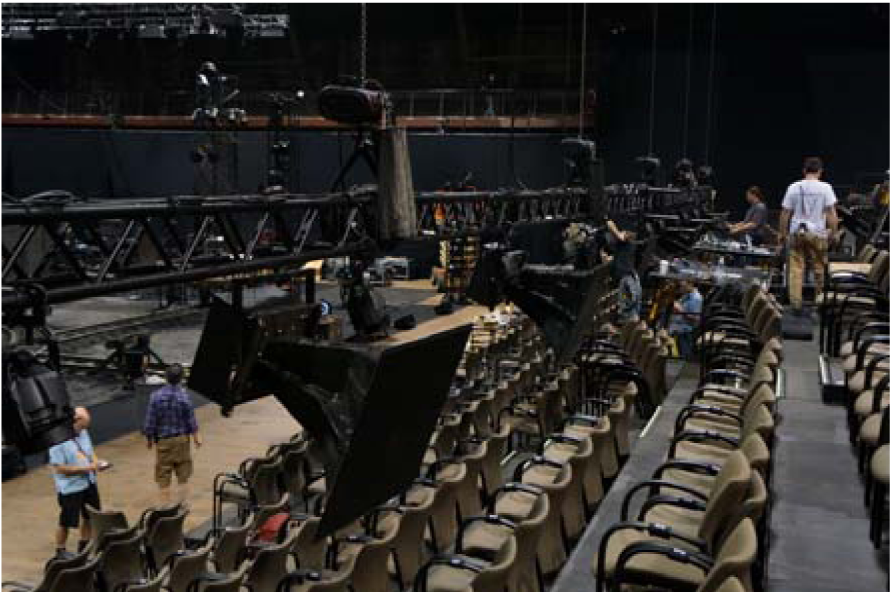
Figure 10 Passenger ECS-LCF-799 Loudspeakers
4.3 St. Matthew’s Passion
The production of St. Matthews Passion involved challenges encountered during the previous productions of The Machine as well as The Passenger. Like The Machine, it would be staged in the round – but the audience size would be much larger. Like the Passenger, it would utilize orchestra, chorus and operatic singers - but both the singers as well as the chorus would take center stage and project in all directions. Hence, line array microphones would be employed in a similar manner as The Machine. In addition, the orchestra, chorus, and audience would all have dedicated acoustics engines all adjusted optimally
for each portion of the venue. Fortunately, the system was designed for the needs of this concert, and previous productions had provided valuable experience in deploying the system successfully.
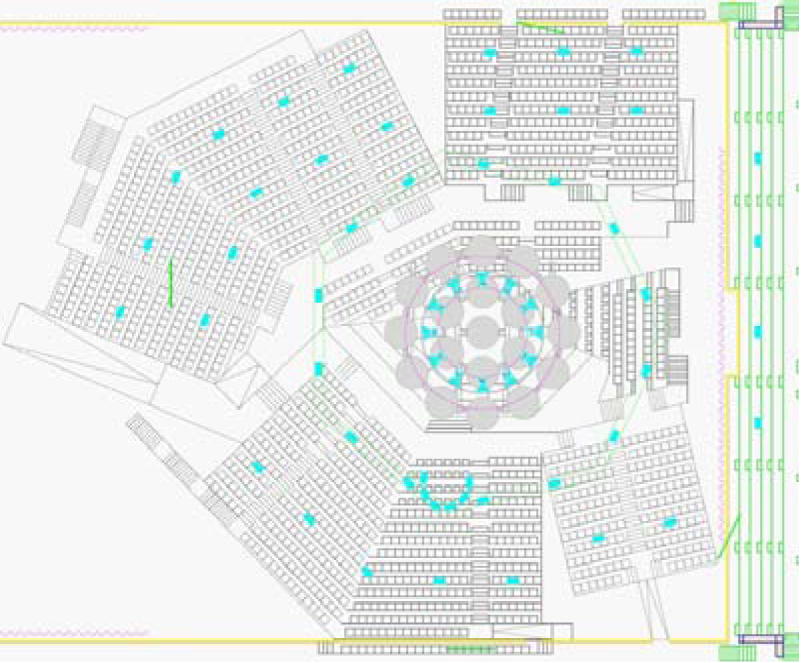
Figure 11 St Matthews Passion Layout
Figure 11 shows the planned transducer layout, and
Figure 12 shows the staging for the event.
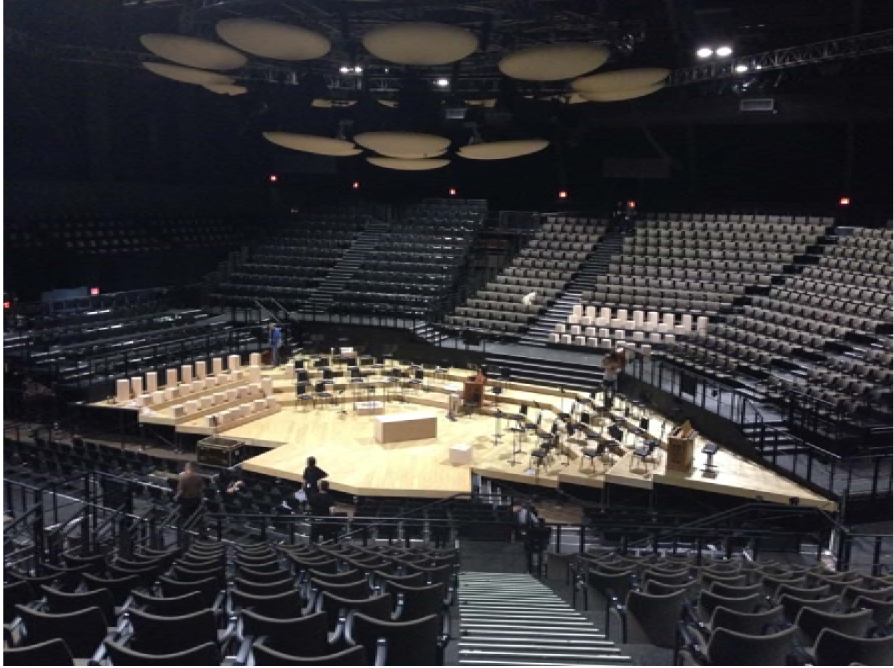
Figure 12 Staging for St. Matthews Passion
5 CONCLUSIONS
We have demonstrated to both the Park Avenue Armory as well as Lincoln Center that this approach can produce very successful results. In addition, all productions have garnered favorable critical reviews. We have also demonstrated that E-coustic Systems electronic architecture can be successfully integrated with body mic techniques to produce a reasonable semblance of a “natural” acoustical environment. However, you cannot “ignore” the natural architectural acoustics of the venue. Temporary acoustical treatments must be integrated into each production in order to reduce reverberation level,
and or control problematic late reflections.



